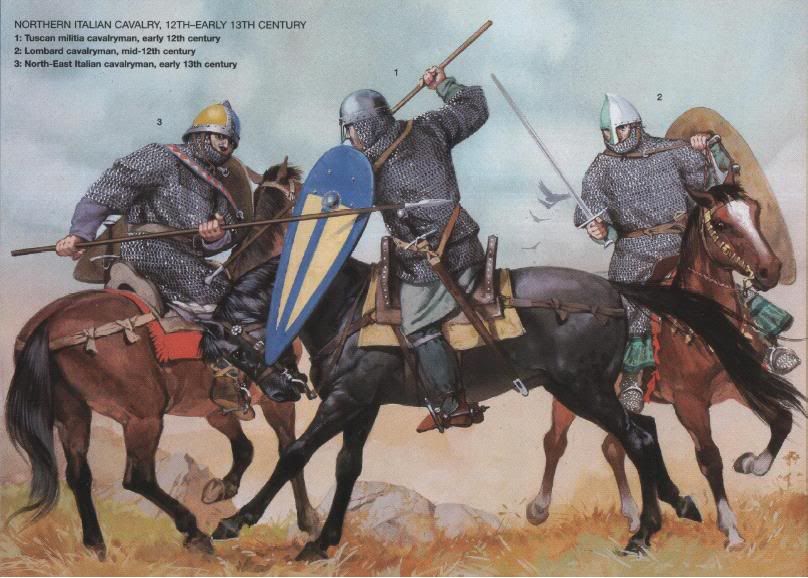The Battle of Desio was fought on 21 January 1277 between the Della Torre and Visconti families for the control of Milan and its countryside. The battlefield was located near the modern Desio, a commune outside the
families for the control of Milan and its countryside. The battlefield was located near the modern Desio, a commune outside the city in Lombardy,
city in Lombardy,  northern Italy.
northern Italy.
 families for the control of Milan and its countryside. The battlefield was located near the modern Desio, a commune outside the
families for the control of Milan and its countryside. The battlefield was located near the modern Desio, a commune outside the city in Lombardy,
city in Lombardy,  northern Italy.
northern Italy.
Although generally considered one of the numerous minor battles fought in the 13th century in Italy during theWars of the Guelphs and Ghibellines, it was in fact the conclusion of a long inner struggle for the possession of Milan, leading to the transformation of the former democratic regime into an
it was in fact the conclusion of a long inner struggle for the possession of Milan, leading to the transformation of the former democratic regime into an  aristocratic signoria. The Visconti victory granted them the rule over Milan, which lasted until the 15th century.
aristocratic signoria. The Visconti victory granted them the rule over Milan, which lasted until the 15th century.
 it was in fact the conclusion of a long inner struggle for the possession of Milan, leading to the transformation of the former democratic regime into an
it was in fact the conclusion of a long inner struggle for the possession of Milan, leading to the transformation of the former democratic regime into an  aristocratic signoria. The Visconti victory granted them the rule over Milan, which lasted until the 15th century.
aristocratic signoria. The Visconti victory granted them the rule over Milan, which lasted until the 15th century.
In the 13th century, the politic life in Milan shared the same path of many other communes  in Italy, living an increasing series of inner divisions and episodes of corruption. In the decades preceding the battle,
in Italy, living an increasing series of inner divisions and episodes of corruption. In the decades preceding the battle,  the noble family of the Della Torre (or Torriani) had gained the most important political charges in the commune, this way nullifying the democratic ideals of the original medieval commune. They had also launched a program of public works and military expansions, which however brought the Milanese treasure to collapse; the use of often reckless mercenary units further esacerbated the population, granting an increasing support for the Della Torre traditional enemies, the Visconti.
the noble family of the Della Torre (or Torriani) had gained the most important political charges in the commune, this way nullifying the democratic ideals of the original medieval commune. They had also launched a program of public works and military expansions, which however brought the Milanese treasure to collapse; the use of often reckless mercenary units further esacerbated the population, granting an increasing support for the Della Torre traditional enemies, the Visconti.
 in Italy, living an increasing series of inner divisions and episodes of corruption. In the decades preceding the battle,
in Italy, living an increasing series of inner divisions and episodes of corruption. In the decades preceding the battle,
On 22 July 1262 Ottone Visconti  was created archbishop of Milan by Pope Urban IV, against the Della Torre candidate, Raimondo della Torre, bishop of Como.
was created archbishop of Milan by Pope Urban IV, against the Della Torre candidate, Raimondo della Torre, bishop of Como. The latter thus started to publicize an alleged Visconti's nearness to the heretic Cathars
The latter thus started to publicize an alleged Visconti's nearness to the heretic Cathars  and charged them of high treason: the Visconti, who accused the Della Torre of the same crimes, were then banned from Milan and their properties confiscated. The civil war which ensued caused more damage to Milan's population and economy, lasting for more than a decade.
and charged them of high treason: the Visconti, who accused the Della Torre of the same crimes, were then banned from Milan and their properties confiscated. The civil war which ensued caused more damage to Milan's population and economy, lasting for more than a decade.
 was created archbishop of Milan by Pope Urban IV, against the Della Torre candidate, Raimondo della Torre, bishop of Como.
was created archbishop of Milan by Pope Urban IV, against the Della Torre candidate, Raimondo della Torre, bishop of Como. The latter thus started to publicize an alleged Visconti's nearness to the heretic Cathars
The latter thus started to publicize an alleged Visconti's nearness to the heretic Cathars  and charged them of high treason: the Visconti, who accused the Della Torre of the same crimes, were then banned from Milan and their properties confiscated. The civil war which ensued caused more damage to Milan's population and economy, lasting for more than a decade.
and charged them of high treason: the Visconti, who accused the Della Torre of the same crimes, were then banned from Milan and their properties confiscated. The civil war which ensued caused more damage to Milan's population and economy, lasting for more than a decade.




No comments:
Post a Comment